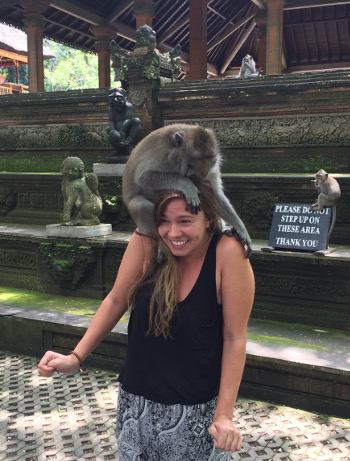The Indonesian island of Bali (pop: 4.5 million) receives around three million holidaymakers a year, around one-quarter of them from Australia. At sunset each day it seems that most of them settle down on the west-facing beaches of the Kuta-Legian-Seminyak strip to watch the red ball sink into the Indian Ocean.
I’m exaggerating, of course, for the numbers are more in the hundreds-to-thousands, but my yardstick is the scene - if one can use the term - back in 1971, on my introduction to Bali, when viewing the famous sunset meant sharing the beach with almost no one.
Reggae was not to be heard, Bintang beer singlets not to be seen. Even the actual Bintang was different, as few of the small shops had electricity, so drinks had to be chilled with blocks of ice.
I know what you’re thinking - if the ice wasn’t made from boiled water, didn’t it cause diarrhea? Yes, it did, but that was just a part of the Bali experience - and despite all the changes, it still is, for reasons often unrelated to water.
My recent visit was by no means the first since the 70s, when I was living in Hong Kong and took someone’s advice to drop by Bali when returning from Australia. Like most newcomers, I was captivated.
The flights went via Jakarta, the capital, which had little in common with Bali except for being ruled by the same corrupt regime (Suharto’s) and not having chilled Bintang, at least in the district where I stayed, which has since been bulldozed for a freeway.
As might be imagined, I have fond memories of a hotel named the ‘Hai Kok’ in a lane called Lesser Two Mango Street.
The changes to Bali in four decades have come at a fast clip, in concert with the steady growth in visitor numbers. The southern coast, closest to the vastly upgraded airport, continues to expand rapidly. First Legian, then Seminyak, became the ‘new Kuta’, words synonymous with “too crowded, too crass, don’t go there”. Now it’s Canggu and beyond - far beyond if you want escape the worst of the crush and the terrible traffic.
Otherwise it’s advisable to head somewhere else, my favourite piece of the ‘real Bali’ being the hill town of Ubud where the hotels are charming, the scenery gorgeous, the tourists more respectful of local customs and less likely to be foolish, apart from those who let the simians climb over them in the sacred Monkey Forest, regardless of the health warnings.
In truth, Bali has many faces, some of them obvious - dive tours, fast boats to other islands, golf courses, bars with pumping music - others less so, such as the traditional dances, accompanied by haunting gamelan music, that are staged in community spaces.
While still undergoing one of the greatest tourist invasions ever seen on the planet, it is displaying Indonesia’s most positive face to the world, regardless of the legal tribulations that sporadically attract media attention.
The current one, involving two Byron Bay people charged with killing an off-duty Balinese policeman, ensured we made no mention of living near another place battling to manage a huge tourist onslaught.





